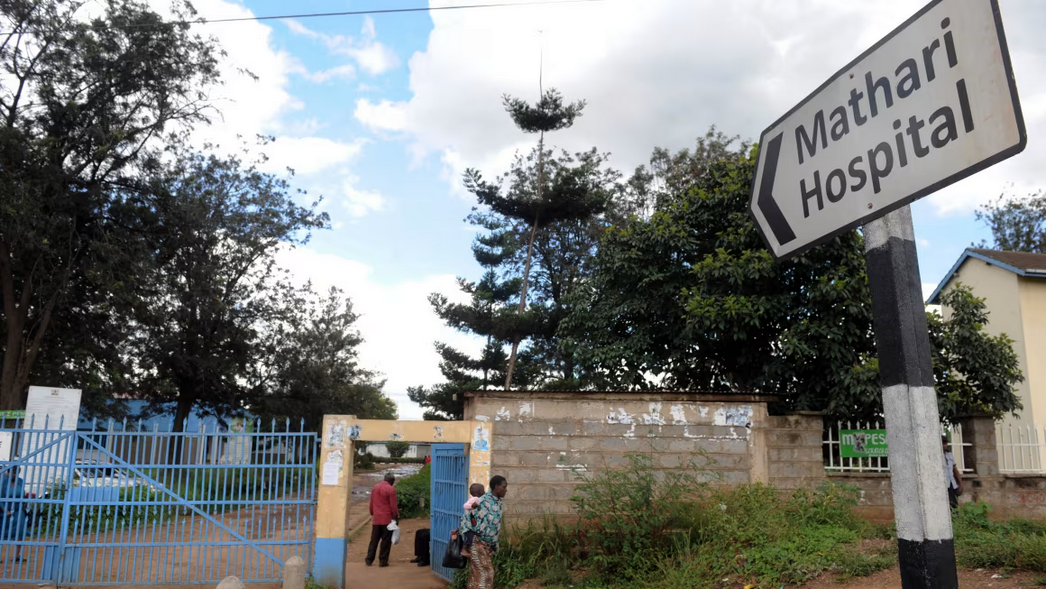NMHA
Executive Summary
Table of Contents
- Executive Summary
- The Problem: A Fragmented Ecosystem in Crisis
- Critical Resource Gaps: A Desert of Specialized Care
- The Policy-Practice Divide: The Implementation Chasm
- Project Solution & Core Components
- Implementation Phases: A Phased, Evidence-Based Approach to Systemic Change
- Why This is a "Flagship" Project: A Paradigm-Shifting Intervention
- Key Partnerships for Success: Building a Coalition for Change
- Measuring Success: A Multi-Dimensional Framework for Impact
The Nairobi Mental Health Atlas (NMHA) will ultimately, after several years, develop the first live, publicly available digital map and database of mental health services, resources, and gaps in Nairobi. The NMHA will be more than a directory; it will integrate community-driven data collection, strong advocacy efforts, and direct service integration in order to eliminate barriers to care, reduce stigma, and inform a policy across Nairobi County. The project addresses the pressing gaps that have been identified in local strategic action plans and is designed to regulate a continuum of care through the employment of technology and the power of the community to create a sustainable mental health ecosystem.

The Problem: A Fragmented Ecosystem in Crisis
Nairobi, an energetic and fast-growing metropolis, is facing a present and severe mental health crisis that has received little acknowledgement, apart from sporadic, unresourced comments in the media. The unique burdens of a major urban centre—high urbanisation rates, extreme inequities, and the multifaceted stressors of modern-day living—are sources of mental health and mental illness for many people. Yet the system of care and support as a whole is not only underresourced, it is mutually constituted and also fundamentally broken—the system is a cascade of barriers to care based on various structural failures. Over and above multiple barriers to access, these failures are paramount in shaping a thin and incomplete system of care delivery and representation in health care policy agendas. In combination, the failures lead to four interrelated and systemic levels of failure that create barriers resulting in widespread suffering and unfulfilled needs:
- Severe Data Fragmentation: Navigating an Invisible Landscape
The most fundamental obstacle to effective mental healthcare in Nairobi is the complete absence of a coherent information infrastructure. There exists no centralized registry or unified platform to catalog mental health service providers. This critical gap manifests in two debilitating ways:
- For Individuals and Families: Choosing external help for oneself or a loved one is of near impossible difficulty. The individual is endlessly lost in a maze of unverified, word-of-mouth, informal organization lists and recommendations. And there is virtually no good way to answer foundational, essential questions: What services exist? (e.g. Is there a support group for postpartum depression?); Where geographically? (e.g. is there a provider in my neighborhood?); Can I afford it? (what fees and costs? is it free, sliding scale, or insurance?); Are they qualified? (what are their specialties, or quality of care?). This extraordinarily highsearch "cost" will almost always result in frustration, hopelessness, and a refused and abandoned search for care.
- For the System Itself: Policymakers, funders, and non-profits work in near blindness. They allocate prudential resources, develop strategies, and make decisions based on out-of-date surveys, anecdotes, or hunches, not real-time and granulated data. This inefficiency contributes to the horrific misallocation of limited resources: repeating services in some places and leaving entire populations, particularly people living in informal settlements, unserved.
- High Stigma: The Cultural Barrier to Seeking Help
Underneath the physical inadequacies is a significant and widespread cultural constraint; mental health illnesses are often stigmatized and misconceptions lead to the idea that people with lived experiences of mental illness are failing or weak; even in some cultures these conditions are framed as a spiritual disease or madness. Not only is it the case that stigma relates to individual character flaws, but it influences attitudes on many levels, creating a powerful disincentive for care:
- Internalized Stigma: Individuals may experience profound feelings of shame, guilt, and self-blame, leading them to believe they should be able to "snap out of it" or that their condition is not a legitimate health issue. This prevents self-identification and the crucial first step of seeking help.
- Social Stigma: Families and communities may actively discourage open discussion or seeking professional help, often preferring to keep issues private or seeking solely traditional or religious interventions. The fear of judgment, discrimination, and social isolation forces people into silence and secrecy, often until a crisis point is reached.
- Structural Stigma: This societal bias becomes embedded within institutions through a chronic lack of prioritization, low funding, and the marginalization of mental health within broader healthcare agendas. This further reinforces the public perception that mental health is not a legitimate or urgent health concern.
Critical Resource Gaps: A Desert of Specialized Care
Data fragmentation and stigma compound an existing severe shortage of human and infrastructure resources. The World Health Organization (WHO) states that the world has a substantial shortage of Mental Health (MH) professionals and in Nairobi, this gap is extremely evident:
- Massive Workforce Shortage: The sum of psychiatrists, clinical psychologists, and psychiatric nurses per unit population is woefully inadequate. This has created an unreasonable burden on the few available professionals that has led to long waiting times, provider burnout, and inadequate, rushed care for the limited cases with which the service provider can engage.
- Inequitable Distribution: The few resources that exist are confined to wealthy urban enclaves and private facilities that are often financially and geographically inaccessible to most Nairobians. There is a severe deficit of mental health resources in informal settlements and low-income neighborhoods; they are "mental health deserts" in which even basic counseling is not available.
- Lack of Integrated Care: Mental health is still belittled and cut-off from primary health care. General practitioners and clinical officers working in public health centers and who serve as first or only point of contact for most citizens are very rarely trained to recognize, manage, or even provide rudimentary level first-aid for common mental health conditions. This can lead to missed opportunities for both early intervention and treatment.
The Policy-Practice Divide: The Implementation Chasm
In light of these significant challenges, the Nairobi City County Government has shown commendable leadership with the Nairobi City County Mental Health Strategic Action Plan 2025–2030. This progressive policy document identified important and ambitious goals to strengthen the entire mental health system. Nevertheless, there is a huge gap between the intended policy in a document and the actual implementation of the policy on the ground.
- Data-Starved Planning: The efficacy of a strategic plan is only as good as the data used to carry it out. Currently, there is insufficient accurate, locality and real time data to properly ask the pertinent operational questions: Where are new facilities to be sited? How many Community Health Workers need to be trained in Mental Health First Aid and which specific sub-counties do we need them in? What is the baseline measure of stigma we can track? What is the baseline measure of stigma we can track after the public awareness campaigns?
- Budgeting in the Dark: Without specific, proof of need information and a clear picture of current allocation of resources, advocates struggle to make the case, using existing budgetary decisions, to the county for an appropriate allocation from the treasury. Without hard numbers, it is difficult to justify a public investment, however nominal it may be, when you are unable to provide a picture of both the severity that the public should care about, and the cost of inaction, or the projected return on investment in a healthier, more productive population.
- Uncoordinated Response: Successful implementation of the strategic plan requires coordinated effort from government departments, NGOs, faith-based organizations, and private providers. Without a common, factual baseline or a single "source of truth", there is no true coordination, and we end up with separate, uncoordinated and even competing interventions, that lead to a watered-down effort overall.
Project Solution & Core Components
The Nairobi Mental Health Atlas (NMHA) is not to be understood as a singular intervention, but a broad ecosystem approach aimed at systematically removing the obstacles to mental health care. It understands that a problem of such magnitude cannot be addressed by a disparate set of actions. Therefore, the NMHA is designed around four profound pillars of interconnection, collectively supporting each other so that the NMHA can create a sustainable and scalable mechanism for changing the system. Thus, the NMHA is designed not only to show the problem, but to design a new pro-active system.
Pillar 1: The Digital Mapping Platform (the "Atlas") is the technological backbone of the entire project. It is more than simply a directory; it is a living public utility that is accessible to all! It will provide an accessible website for individuals with internet access but importantly will offer a USSD/SMS channel for those without data access or reliable smartphone access (especially those with basic mobile phones in low-income and informal settlements) to reach critical information safely, securely, and privately. Each entry in this living database includes fully developed information – a name and address is not enough to allow an individual to make a reasonable decision; deciding on real and on-going needs includes determining the price (and possibly the affordability), the specific services that are offered by this person/organization, languages spoken, and reviews by other users to create trust amongst the community. Most notably, the platform will include a protected Gap Analysis Dashboard, an analytical tool that allows decision-makers to take raw data and turn it into meaningful information. The Gap Analysis Dashboard will include visualizations of service deserts, provider density and will hunt for unmet need - including for example the complete lack of child psychiatrists in areas of population density. Gap Analysis is a data-driven way for providing the evidence needed to investing in, and planning, where resources may be needed.
Pillar 2: Community-Led Data Collection & Advocacy ("Mental Health Champions") guarantees that the digital platform is rooted in ground reality, and is sustained through community ownership. We recognize that technology by itself is no solution; we build the human infrastructure to support it! We will recruit and train a network of trusted community figures (over 100), from boda boda riders, youth leaders, community health volunteers, to religious actors, to serve as Mental Health Champions. These figures will be our eyes and ears of the project and will be equipped with simple mobile tools that allow them to continually identify, confirm, and update data on the services in their own neighborhoods. This model will verify the accuracy and sustainability of the data. In addition to mapping, those that we recruit and train will be trained to serve as frontline advocates in combating stigma. Using the confidence and social capital that they already have built as a trusted figure (i.e., a Mental Health Champion), they will engage and normalize conversations around mental health in barbershops, markets, and places of worship to disrupt cultural barriers and create grassroots referral systems, similar to The Confess Project and other successful models.
Pillar 3: Strategic Advocacy & Policy Influence is the mechanism through which collected data is translated into tangible systemic change. This pillar ensures the project informs and shapes policy and funding decisions at the highest levels. The cornerstone of this effort will be the annual "State of Mental Health in Nairobi" report, a powerful, data-driven publication that moves advocacy from anecdotal pleading to empirical demand. By presenting undeniable evidence of gaps and disparities, these reports will be used to lobby the County Government for increased budgetary allocations, better implementation of the existing strategic plan, and the strategic deployment of resources to identified need areas. Complementing this, we will convene regular Stakeholder Forums, bringing together officials from the County Department of Health, NGOs, and service providers. These meetings will move beyond mere presentation to active co-creation, using the Atlas data as a neutral foundation for collaborative problem-solving and aligning efforts across the ecosystem.
Pillar 4: System Integration & Capacity Building focuses on embedding the Atlas into the daily operation of Nairobi’s system for healthcare and enhancing the system's overall capacity. We will work with existing clinics and hospitals to develop training for primary care workers and community health volunteers in basic mental health first aid. A key part of the training will be around using the Atlas as a worthwhile referral tool, so that a nurse or community health worker can immediately link a patient to the appropriate specialized care. To ensure that Atlas' impact is maximized we will create Application Programming Interface (API) for the Atlas. The API incorporates Atlas’ verified information into other health platforms such as telemedicine services, hospital management systems and other health applications. This technical dimension will transform the NMHA from a website into the central nervous system for mental health referrals in Nairobi. Under this model, it will not matter where a person enters the healthcare system, because they should be able to be oriented to the right resource, thereby building a true network of connected care.
These four pillars work together as a robust solution. The Atlas (Pillar 1) provides intelligence, which is collected and verified by Champions (Pillar 2), which then drive advocacy for systemic change (Pillar 3) and are also taking place directly in the healthcare system to improve its daily operation (Pillar 4). This creates a virtuous cycle in which each pillar increases each other's effectiveness, creating a more sustainable, accessible, and effective mental health ecosystem for everyone in Nairobi.
Implementation Phases: A Phased, Evidence-Based Approach to Systemic Change
The execution of the Nairobi Mental Health Atlas consists of three separate, but connected stages, and is able to shift from a targeted proof of concept to a scalable and sustainable public utility. We have structured our approach in three stages to ensure the project is evidence-based and learning-driven, whilst positioning the project to support change through a systemic approach.
The Pilot Phase will take place over a total of 12 months and will form the basis of the foundation. We will focus on two or three geographically strategic sub-counties (the mixed urban and commercial surround of Starehe, an urban residential community, for example, or, a subset of the informal settlement, Kibra), to create nut shell of the complexities and potentialities of Nairobi, a microcosm. Using this controlled lens, we will complete a map of 100% of the formal mental health service providers in Starehe and Langata, and a validated baseline of the service data required. We will also select, train, and roll out our first cohort number of 50 Mental Health Champions, establishing a core cohort of community leaders and data custodians. This will also be a moving Endeavour into the early public phase of the digital platform so that we can perfect its coding, user navigation/user experience, and data integrity based on real users using a minimalist basis. This pilot phase is about showing we can prove and test the model practically, and set a working operational framework as well as obtaining the initial evidence required to convince others.
When validation is complete, the project will enter the twenty-four month Scale-Up Phase. The Scale-Up Phase consists of geographic expansion and strategic deepening. The mapping and champion networks will eventually roll out to every one of the seventeen sub-counties in Nairobi. These activities will lead the Atlas to become a city-wide initiative. Second, the data collected will be used to develop and launch the Gap Analysis Dashboard, which is an advanced data structure that will convert our information into useful intelligence for policymakers and NGOs. This added intelligence will feed a major public advocacy and awareness campaign to lead to mass adoption of the platform by citizens, and illustrate the platform's value to government. Ultimately, the primary goal of this phase will be to get a commitment document from the Nairobi City County Government for an agreement to use the Atlas as the City's official data and planning tool for mental health, and integrate the project into the public health architecture.
The last and continuous Sustainability and Expansion Phase is aimed at ensuring sustainability and expansion events beyond Nairobi. The next phase will move into deep technical and operational integration, embedding the Atlas into the county health information systems, referral systems, and telehealth services to become an integral part of everyday primary health care. We will have diversified our income by developing financially sustainable models such as premium API/data services offered to private hospitals and insurers, while still pursuing grants and advocating for government direct funding. With a strong, validated operating model in Nairobi, we hope that growth opportunities will begin. This includes opportunities to replicate and pilot the Atlas in other Kenyan counties, as well as thinking about how we package both the technology, training materials/modules, and implementation playbook together to effectively promote mental health resource mapping and advocacy to improve mental health services in Kenya.
Why This is a "Flagship" Project: A Paradigm-Shifting Intervention
The Nairobi Atlas of Mental Health is not simply conceived to be another program, it is a flag ship project, as a generative idea or initiative that can fulfill our mission and presents the right components to fundamentally change the mental health space of the city. There is an ontological and epistemological distinction regarding the flag ship status and this comes from a combination of attributes that ensure immediate impact, sustainable value and system impact.
First, we need a high visibility/impact position. In fields willing right, where the valueadd is often blurred, the Atlas has given us clear and dynamic digital collateral. An interactive map, this is an innovative asset that can be quickly demonstrated to funders, bureaucrats, and the general public with clear illustrations of both the problem and the address. The case for investment to make a tangible difference is undeniable, it is functional, it allows for concerted "buy-in", and excitement is generated.
Secondly, it Addresses a Critical Need with surgical precision. The project goes beyond the peripheral issues and deals directly with the most fundamental barriers to accessing care. For the affected individual seeking help, it answers the critical, "I don't know where to go" emphatically. For the influential policymaker attempting to allocate scarce resources effectively, it tackles the vital uncertainty of "I don't know what exists or where the gaps are." By answering those critical questions, the Atlas becomes the vital on-ramp into the whole mental health ecosystem.
Moreover, the project is designed with a Multiplier Effect at its core. It does not create a new service model; it is a force multiplier that exponentially improves every existing mental health provider in Nairobi. It takes valuable but unknown services which were more or less invisibly existing until the Atlas went live and made them instantly, readily discoverable services, thus ensuring those investments in counselling, support groups, and clinical care are maximally impactful. In this way, the Atlas is raising up the whole sector and creating a network much larger than the sum of its parts.
Here’s the deal—it’s super friendly, honestly. Picture this: the whole thing is built right in the middle of the community, not dropped in from some faraway office. Local folks are running the show, so everyone actually trusts what’s going on. People care, they pitch in, and even after the big launch party, things don’t just fizzle out. It sticks because it belongs to them. And the data? Oh, it’s a total upgrade. Instead of guessing or just swapping stories, now there’s real info, actual numbers. So when someone says, “Hey, there’s a gap here,” they can show exactly what they mean. No more hand-waving—people in charge actually have to listen. So, honestly, it’s like mixing community spirit with some serious evidence. The Nairobi Mental Health Atlas isn’t just another project—it’s setting a new vibe for mental health, and everyone’s invited.
Key Partnerships for Success: Building a Coalition for Change
The Nairobi Mental Health Atlas represents a complex, ambitious initiative that inherently requires a network of strategic partnerships. Its potential for meaningful impact depends on the intentional assembly of collaborators, each chosen for their specific capacity to advance the project’s objectives.
Foremost among these is the Nairobi City County Government, particularly its Health Department. Their involvement is indispensable, both in conferring legitimacy and in facilitating access to essential data—such as existing records of healthcare facilities and community health workers—that forms the backbone of the Atlas’s mapping process. Moreover, the County Government stands as the principal end-user of the Atlas’s outputs; their commitment to integrating these data-driven insights into policy, planning, and resource allocation is imperative for actual improvements in public mental health infrastructure.
A dedicated technology partner, whether a mission-driven local company or an academic department specializing in computer science, is equally crucial. These collaborators translate the Atlas’s vision into a functional, accessible digital platform. Their expertise ensures robust development and maintenance of the website, communication gateways, and secure databases. By offering services on a pro bono or cost-recovery basis, they also enhance the project’s financial sustainability, while guaranteeing ongoing technical proficiency.
To maintain scholarly rigor and credibility, partnerships with respected research institutions such as APHRC or LVCT Health are essential. These organizations bring methodological expertise, assist in designing reliable data collection frameworks, and independently validate findings. Their involvement transforms the annual “State of Mental Health in Nairobi” reports into authoritative resources, supporting evidence-based advocacy efforts.
Corporate sponsors play a pivotal role in ensuring the Atlas’s sustainability and reach. Through corporate social responsibility initiatives, they fund key elements—such as stipends for Mental Health Champions or large-scale public campaigns—that may not be easily supported by traditional grants. These partnerships are mutually beneficial, enhancing both corporate reputation and the project’s visibility.
Finally, alliances with prominent media organizations are vital for public engagement. Media partners amplify awareness, facilitate platform adoption, and foster shifts in public attitudes by normalizing mental health discourse. Their involvement significantly extends the reach and impact of the Atlas, embedding its message within everyday civic life.
In sum, the Nairobi Mental Health Atlas’s success is predicated on a diversified partnership model, with each collaborator playing a critical, well-defined role in advancing the project’s mission.
Measuring Success: A Multi-Dimensional Framework for Impact
To rigorously assess whether the Nairobi Mental Health Atlas (NMHA) realizes its intended outcomes, a comprehensive monitoring and evaluation strategy is indispensable. Rather than relying on a singular metric, the NMHA employs a multi-faceted array of quantitative and qualitative indicators, allowing for nuanced appraisal across outputs, outcomes, and broader impacts. This layered approach ensures that progress is systematically tracked, effectiveness is critically examined, and the project’s transformative potential is substantiated for both community stakeholders and governmental decision-makers.
At the platform level, primary emphasis is placed on adoption and utility. Metrics include the number of unique users engaging with the digital atlas and USSD service, a direct proxy for reach and public awareness. Furthermore, the frequency of searches conducted is closely monitored, serving as a marker for active user engagement and initial help-seeking behavior. The project also prioritizes the comprehensive mapping and ongoing verification of mental health services, underscoring the integrity and reliability of the underlying data infrastructure.
Community engagement is measured through the development and mobilization of local capacity. Key indicators include the number of Mental Health Champions trained, certified, and actively contributing to outreach efforts. This reflects both investment in human capital and the establishment of sustainable mechanisms for data collection and stigma mitigation. Additionally, the quantity and frequency of community outreach activities—such as events, forums, and facilitated discussions—are systematically recorded, providing insight into the project’s penetration and resonance within target communities.
For advocacy and systemic change, the NMHA seeks evidence of institutional shifts. This is reflected in documented adjustments to the Nairobi County mental health budget, with particular attention to increased investments in previously underserved areas as identified by the Atlas. The adoption of data-informed policy reforms—ranging from formal integration of the Atlas into county planning to the mainstreaming of mental health in primary care and the development of new workforce strategies—serves as further evidence of systemic influence.
Ultimately, the project’s most critical indicators are those that capture genuine improvements in population wellbeing. Representative pre- and post-intervention surveys, utilizing validated stigma scales, will quantify changes in public attitudes and willingness to seek care. These measures directly address the pivotal barrier of stigma. Additionally, user feedback mechanisms are employed to gauge the ease with which individuals can locate services, with the objective of significantly increasing the proportion of the population who report successful access. In sum, these metrics collectively evaluate whether the NMHA is effecting substantive, positive change in the mental health landscape of Nairobi.









